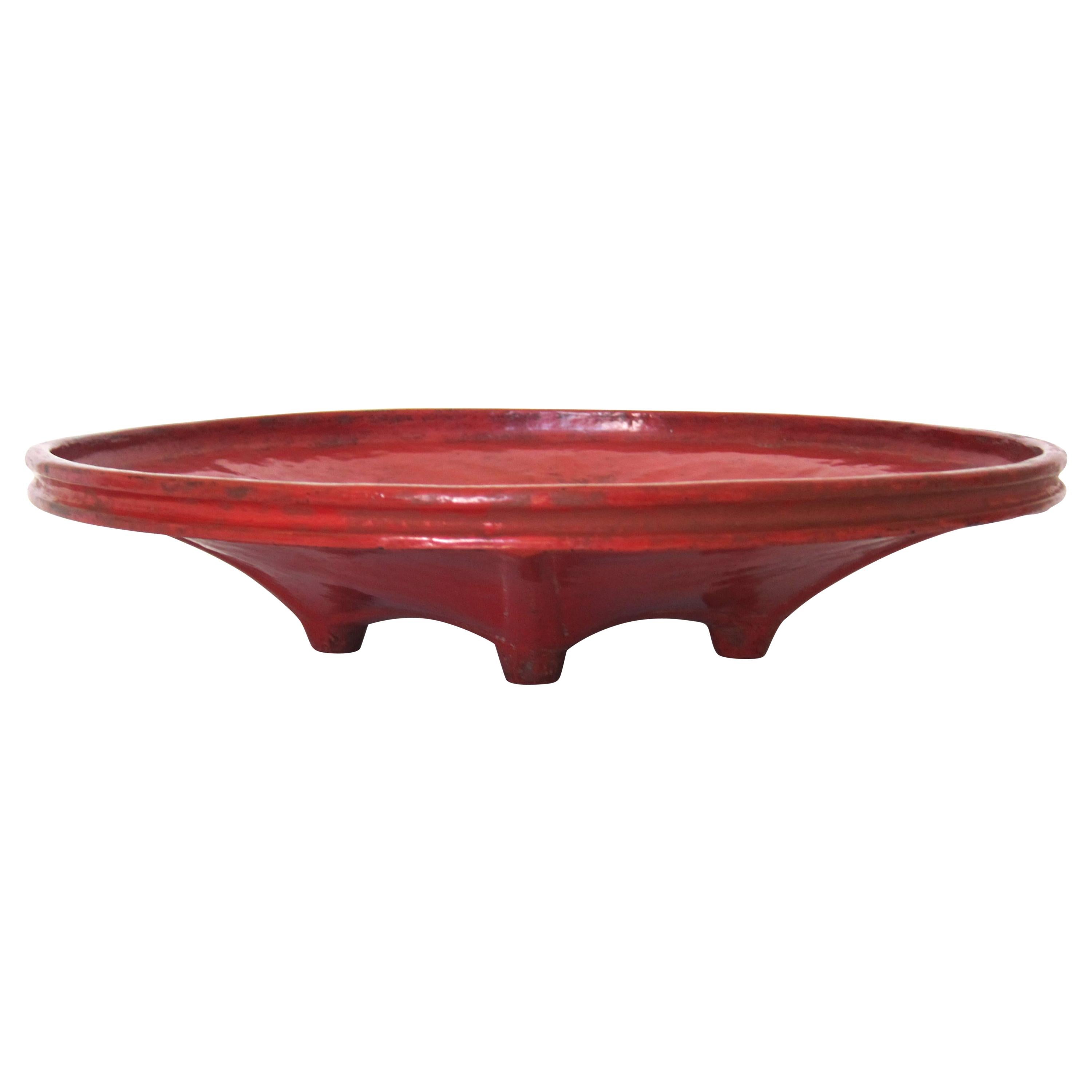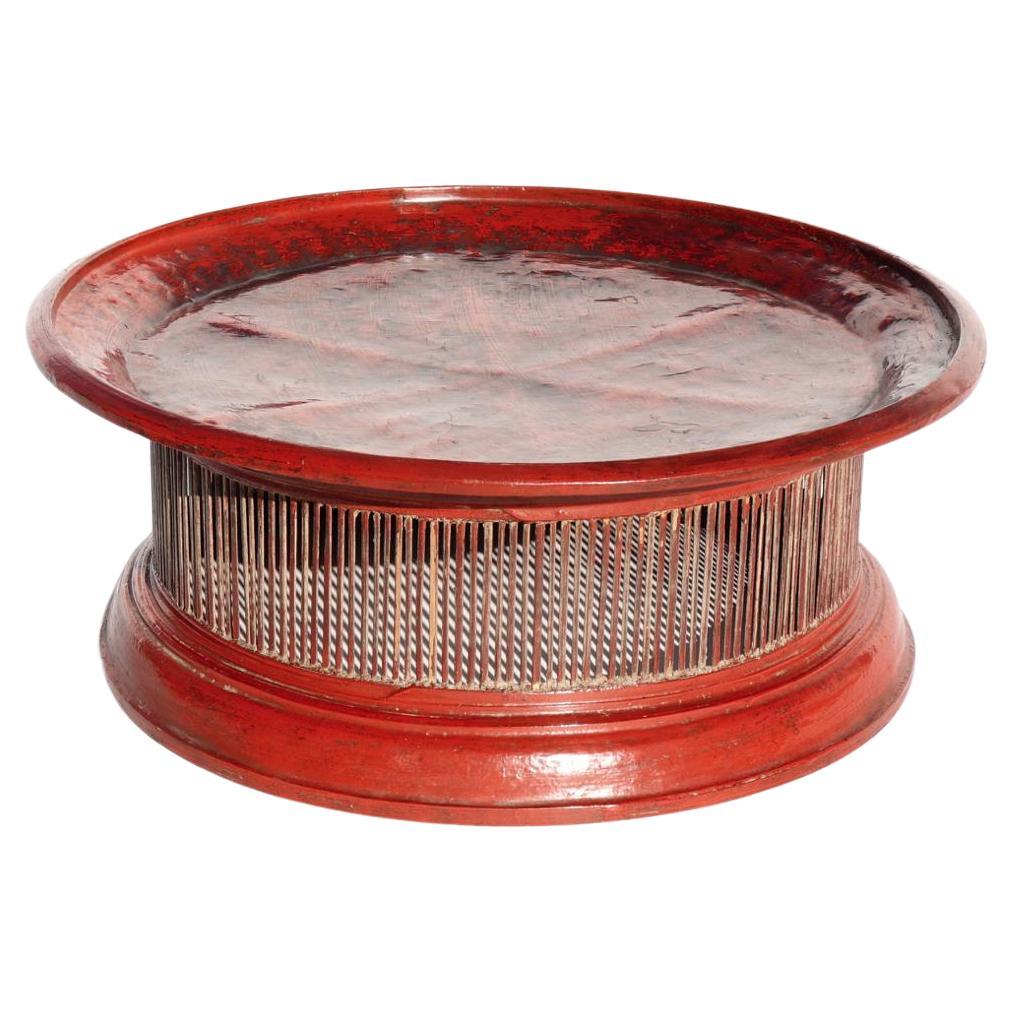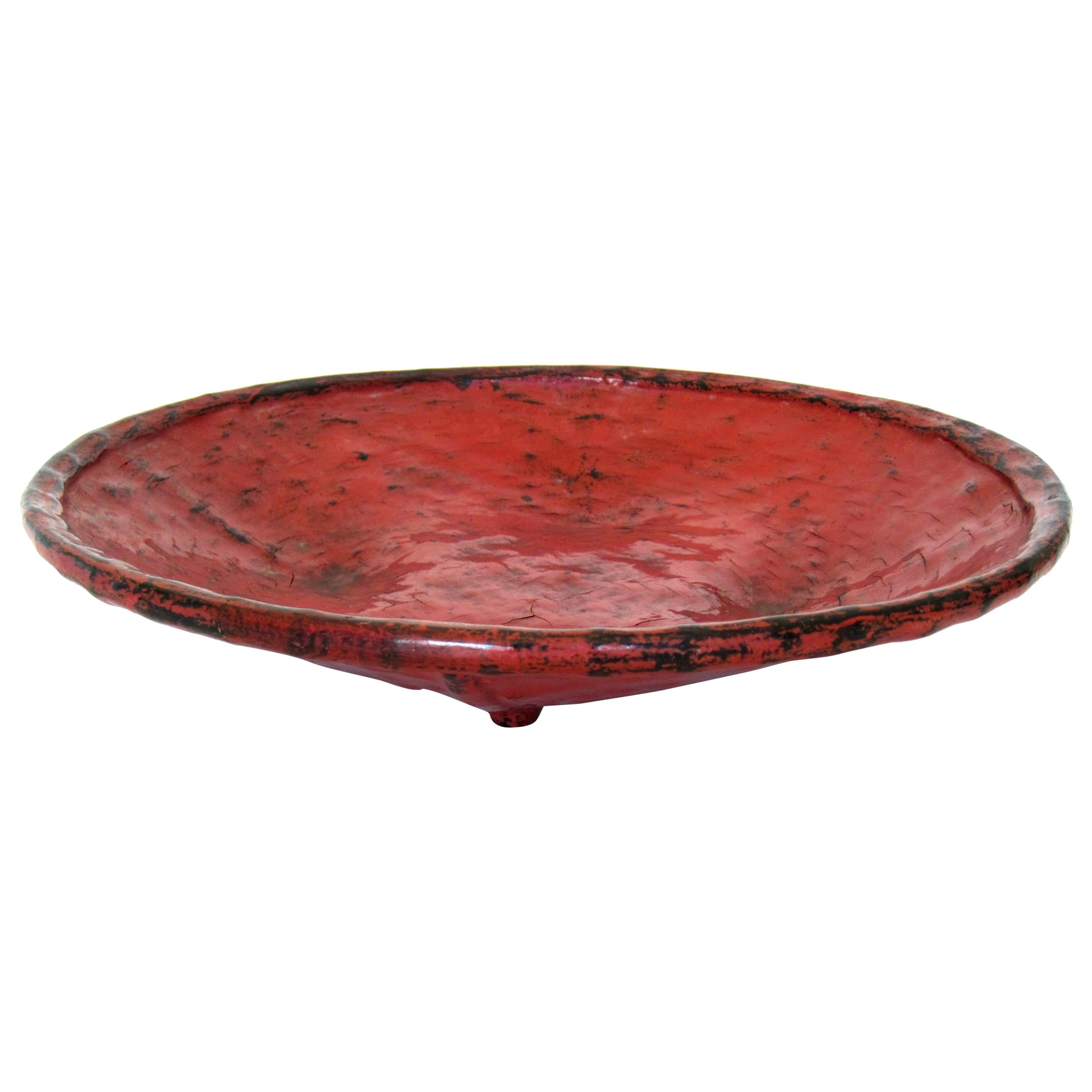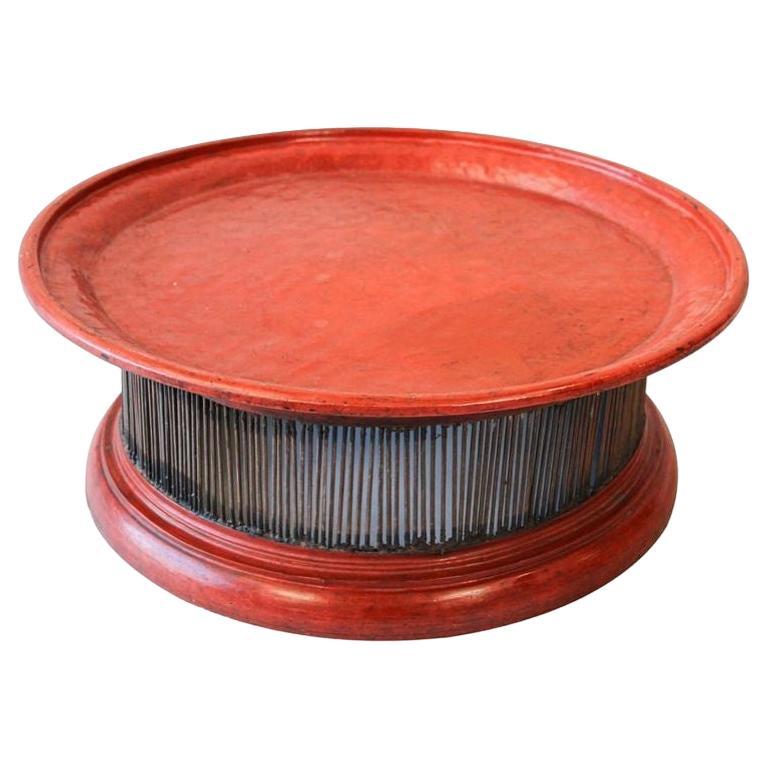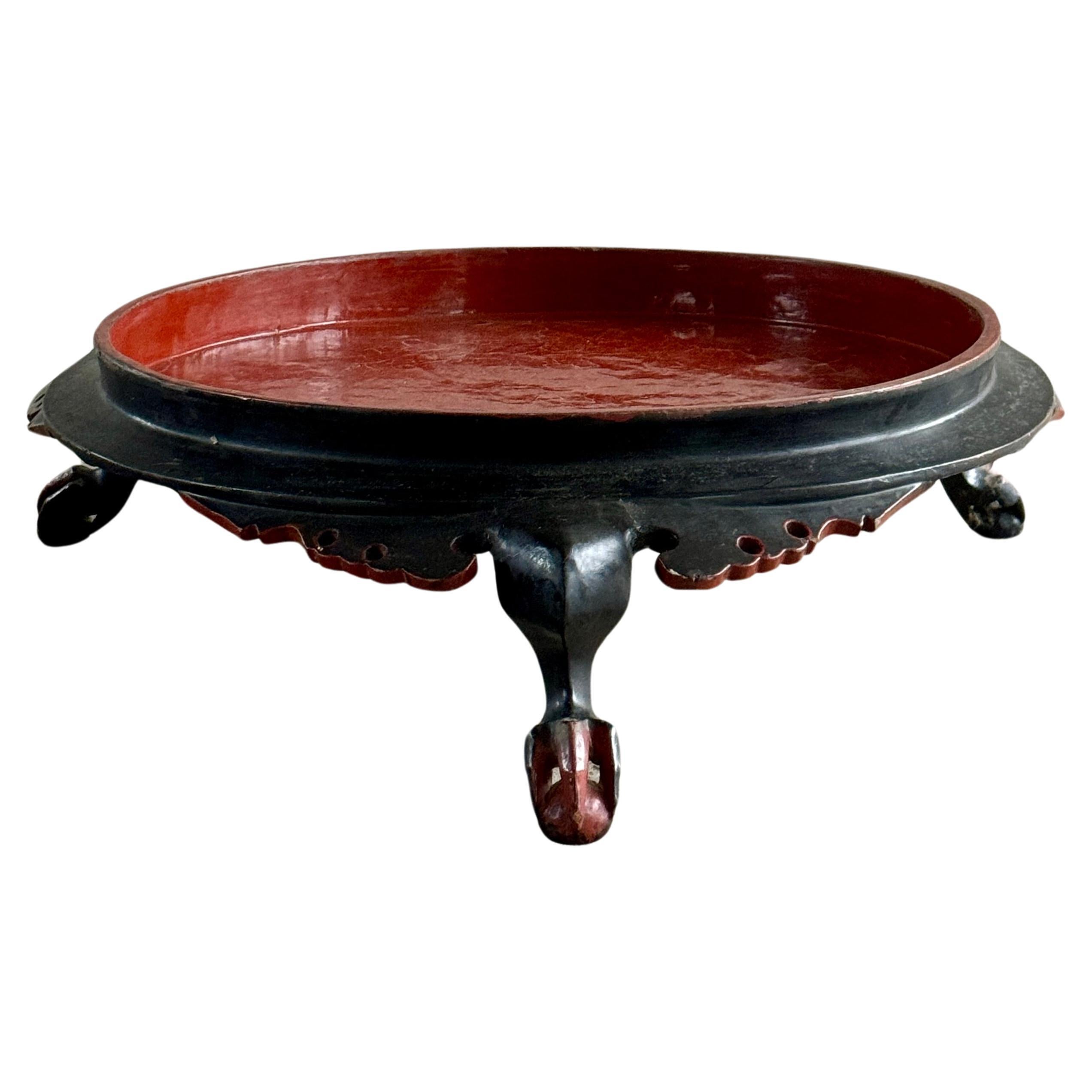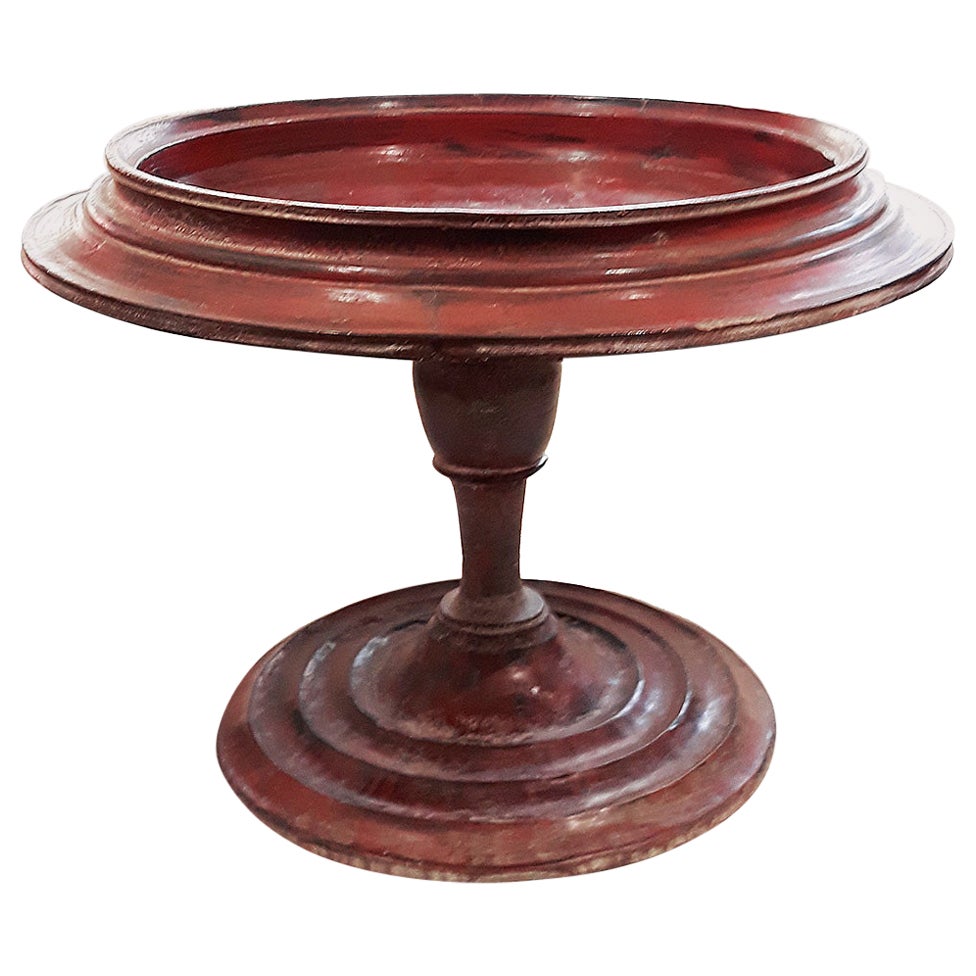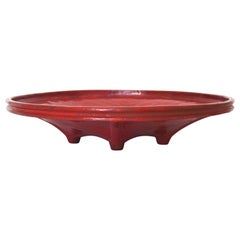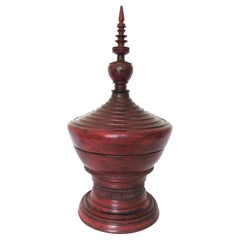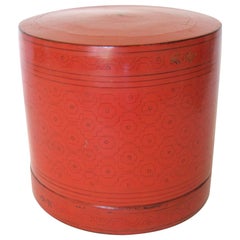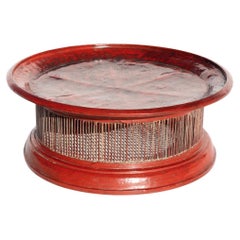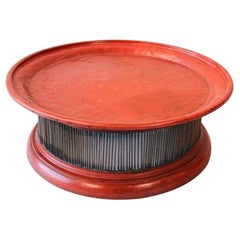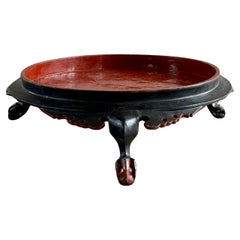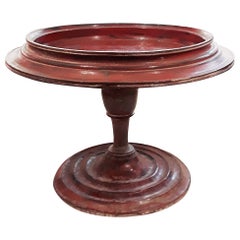Items Similar to Early 20th Century Burmese Lacquered Tray Stand, “Dang lan”
Want more images or videos?
Request additional images or videos from the seller
1 of 9
Early 20th Century Burmese Lacquered Tray Stand, “Dang lan”
$2,500
£1,895.34
€2,184.83
CA$3,520.85
A$3,904.36
CHF 2,051.45
MX$47,704.66
NOK 25,666.46
SEK 24,092.36
DKK 16,310.18
About the Item
Burmese (Myanmar) lacquer ware has a long tradition dating back to the 13th century. Lacquer in Burma is called “Thitsi” meaning the sap of a Thitsi Tree (Melanhorrea Usitata). Typically, bamboo and wood are used as a frame or base in making lacquer work.
This table tray stand called a “Dang lan” and is used to hold dishes of food for the family meal.
This stand is constructed with woven bamboo that is then applied with many layers of lacquer. Black lacquered frame with red lacquered center, with a small black flower motif in the center.
Measurements: 21-1/2” diameter, 8-1/4” high.
- Dimensions:Height: 8.25 in (20.96 cm)Diameter: 21.5 in (54.61 cm)
- Materials and Techniques:
- Place of Origin:
- Period:
- Date of Manufacture:circa 1940
- Condition:Wear consistent with age and use.
- Seller Location:Atlanta, GA
- Reference Number:Seller: BL801stDibs: LU945016383842
About the Seller
4.9
Platinum Seller
Premium sellers with a 4.7+ rating and 24-hour response times
Established in 2006
1stDibs seller since 2010
567 sales on 1stDibs
Typical response time: <1 hour
- ShippingRetrieving quote...Shipping from: Miami, FL
- Return Policy
Authenticity Guarantee
In the unlikely event there’s an issue with an item’s authenticity, contact us within 1 year for a full refund. DetailsMoney-Back Guarantee
If your item is not as described, is damaged in transit, or does not arrive, contact us within 7 days for a full refund. Details24-Hour Cancellation
You have a 24-hour grace period in which to reconsider your purchase, with no questions asked.Vetted Professional Sellers
Our world-class sellers must adhere to strict standards for service and quality, maintaining the integrity of our listings.Price-Match Guarantee
If you find that a seller listed the same item for a lower price elsewhere, we’ll match it.Trusted Global Delivery
Our best-in-class carrier network provides specialized shipping options worldwide, including custom delivery.More From This Seller
View AllEarly 20th Century Burmese Lacquered Tray, “Pagan Bya”
Located in Atlanta, GA
Burmese (Myanmar) Lacquerware has a long tradition dating back to the 13th century. Lacquer in Burma is called “Thitsi” meaning the sap of a Thitsi Tree (Melanhorrea Usitata). Typica...
Category
Early 20th Century Burmese Lacquer
Materials
Bamboo, Lacquer
Early 20th Century Burmese Lacquered Tray, “Pagan Bya”
Located in Atlanta, GA
Burmese (Myanmar) Lacquerware has a long tradition dating back to the 13th century. Lacquer in Burma is called “Thitsi” meaning the sap of a Thitsi Tree (Melanhorrea Usitata). Typica...
Category
Early 20th Century Burmese Lacquer
Materials
Bamboo, Lacquer
Early 20th Century Burmese Lacquer Offering Vessel, Hsun Ok
Located in Atlanta, GA
Burmese (Myanmar) lacquer ware has a long tradition dating back to the 13th century. Lacquer in Burma is called “Thitsi” meaning the sap of a Thitsi Tree (Melanhorrea Usitata). Typically, bamboo and wood are used as a frame or base in making lacquer work.
This covered offering vessel is called a “Hsun Ok...
Category
Vintage 1920s Burmese Lacquer
Materials
Wood, Lacquer
Early 20th Century, Large Burmese Betel Box, “Kun It”
Located in Atlanta, GA
Burmese (Myanmar) Lacquerware has a long tradition dating back to the 13th Century. Lacquer in Burma is called “Thitsi” meaning the sap of a Thitsi Tree (Melanhorrea Usitata). Typica...
Category
Early 20th Century Burmese Lacquer
Materials
Bamboo, Lacquer
Antique Korean Lacquer Wood Soban Table Joseon Period
Located in Atlanta, GA
A small antique wood table from Korea from turn of the 20th century (end of Joseon Dynasty). This type of light weight table is called "Soban" in Korean. which means "Small Tray". It was widely used primarily as individual dining table to present and serve foods, but also as small desk, incense burner...
Category
Antique Late 19th Century Korean Other Furniture
Materials
Wood
Antique Lacquer Offering Elm Bowl Southeast Asia
Located in Atlanta, GA
A Southeast Asian lacquer vessel of iconic form from Burma or Northern Thailand, circa turn of the 20th century. This covered vessel is called a “Hsun Ok” and was made in the form of...
Category
Early 20th Century Burmese Archaistic Lacquer
Materials
Wood, Lacquer
You May Also Like
Large Vintage Burmese Red Lacquered Offering Tray
Located in Point Richmond, CA
Large Vintage Burmese Red Lacquered Offering Tray, referred to as a “Dang Lan” crafted of woven and assembled bamboo covered in a thick red and black lacquer, having thin strips of b...
Category
Vintage 1950s Burmese Other Lacquer
Materials
Bamboo, Lacquer
1940s Burmese Lacquered Red Tray Large Size Bamboo Thai Stand
Located in Moreno Valley, CA
Early 20th century large Burmese lacquered bamboo tray handcrafted red Thai lacquered rattan footed stand.
This Thai features a drum shape circular tray top sitting above a body rhythmically accented with spindle motifs, the ensemble resting on a confirming plinth.
Burmese (Myanmar) lacquer ware has a long tradition dating back to the 13th century.
Lacquer in Burma is called “Thitsi” meaning the sap of a Thitsi Tree (Melanhorrea Usitata).
Typically, bamboo and wood are used as a frame or base in making lacquer work.
This table tray stand called a “Dang lan”.
This stand is constructed with woven bamboo that is then applied with many layers of lacquer.
Black lacquered frame covered with red lacquer.
A large high quality handcrafted wooden elevated tray...
Category
Mid-20th Century Thai Folk Art Lacquer
Materials
Rattan, Wood, Paper, Bamboo
Early 19th Century Burmese Lacquered Offering Tray
Located in Wainscott, NY
Materials and Technique:
These trays were traditionally made from bamboo or wood and coated with layers of lacquer, a process known as "Pan-Yun." Lacquerware is a distinctive and rev...
Category
Antique Early 19th Century Asian Decorative Bowls
Materials
Wood, Lacquer
Lacquered Pedestal Tray / Table Stand from Burma, Late 19th Century
Located in New York, NY
A small pedestal tray table, hand-carved in Burma (Myanmar), circa 1890.
Lacquered in red, turned base. A beautiful decorative accent for any dinner table, console or kitchen counter.
Category
Antique 1890s Burmese Other Pedestals
Materials
Wood
$850 Sale Price
24% Off
Burmese Red & Black Lacquer Stand, c. 1900
Located in Chicago, IL
A Burmese display stand or offering stand of woven bamboo finished with red and black lacquer. Raised by a round woven pedestal base, the colorful tray resembles traditional offering...
Category
Early 20th Century Burmese Folk Art Decorative Baskets
Materials
Bamboo
Late 19th/ early 20th Century Large Red Lacquer Offering Tray, Burma
Located in Point Richmond, CA
Large Red Offering Tray, Burma
Late 19th/early 20th century
Bamboo, lacquer ...
Category
Early 20th Century Burmese Tribal Lacquer
Materials
Bamboo, Lacquer
More Ways To Browse
Mid Century Black Lacquer
Burmese Burma
Red Lacquer Furniture
Lacquer Table Base
Black And Red Lacquer
Red Lacquer Table
13th Century
Asian Black Lacquer Furniture
Asian Red Lacquer
Bamboo Black Lacquered
Black Lacquered Center Table
Long Asian Table
Burmese Lacquer Furniture
Burmese Lacquer
Vintage Wood Tree Stands
Red Lacquer Tray
Asian Art Bamboo Frame
Black Lacquered Bamboo Table
